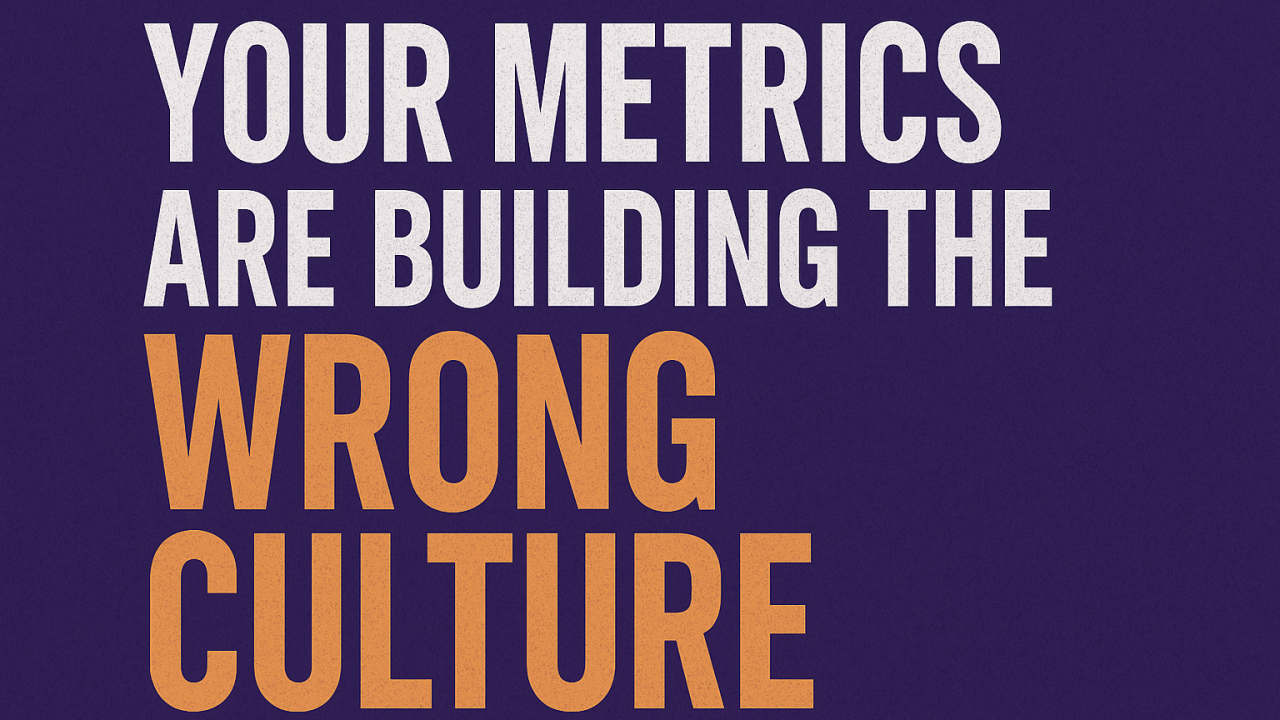Your Metrics Are Building the Wrong Culture

There’s a saying—“Tell me what the incentives are, and I will tell you the outcome.” In support organizations, that saying is gospel.
Incentives, whether intentional or accidental, shape behavior. And behavior shapes culture.
If you incentivize “heroism”—rewarding the person who pulls an all-nighter to save a customer—you’ll create a culture where burnout becomes the norm, and knowledge hoarding is rewarded because only the “hero” can fix things.
If your dashboards obsess over ticket closure rates, your team will prioritize speed over quality.
Incentivize perfect case hygiene? You may get a team that’s good at documentation, but struggles with customer empathy or strategic thinking.
Incentives are the steering wheel of your support org. And if you’re not holding it firmly and deliberately, you’re probably veering off-course without even realizing it.
A Simple Framework: Incentives → Behaviors → Culture
- Incentives – What are you explicitly or implicitly rewarding?
- Behaviors – What do people start doing to align with those rewards?
- Culture – What do those behaviors reinforce over time?
This works in both directions: change the incentives, and you can redirect the culture.
And remember, not all incentives are monetary. Recognition, visibility, influence, access to decision-makers, “being in the room,” autonomy—all of these are powerful levers that shape behavior.
Let’s Talk About the Loud Voices
Here comes my personal rant, and maybe it’ll resonate with you: In many support orgs, the people who get recognized and promoted aren’t always the most thoughtful, strategic, or customer-centric. They’re often the loudest. The ones who talk the most in meetings, who jump on the highest-profile cases, who drop their name in the Slack thread as the one who “saved the day.”
I’ve led, coached, and worked alongside brilliant, quiet operators. Folks who consistently deliver, mentor behind the scenes, build systems that reduce escalations—and never raise their voice. But because we don’t incentivize sustained impact, these people live in the shadows.
If you're in a leadership role and you only see what’s loud or flashy, you’ll miss the real engines of your team.
Micromanagement is a Symptom, Not a Solution
Leaders sometimes respond to misaligned culture with tighter controls: checklist audits, more dashboards, stricter workflows. That’s micromanagement.
Micromanagement is often a symptom of unclear incentives. If you haven’t defined what good looks like, and if your team isn’t operating consistently, it’s tempting to overcorrect with process. But process without purpose just creates resentment. It also discourages ownership.
If your team doesn’t trust the system to recognize the right things, they’ll either game it or disengage.
Good Incentives to Aspire To
Here are some incentives you can implement to shape the culture you want:
- Team-based metrics: Reduce the individual competition and emphasize collective performance. If one person is closing 50 tickets but creating rework for others, that’s not success.
- Customer outcomes, not outputs: Reward reduction in repeat tickets, customer sentiment improvements, or fewer escalations—not just activity.
- Knowledge sharing & enablement: Celebrate people who document well, mentor peers, and eliminate single points of failure.
- Autonomy and trust: Give experienced team members the space to define solutions, mentor others, or lead cross-functional projects. Trust is an incentive.
- Silent wins: Create systems for surfacing behind-the-scenes contributions. A peer-nominated spotlight, a quarterly “quiet excellence” award, or even just more thoughtful 1:1 check-ins.
- Consistency and thoughtfulness: Recognize people who embody long-term impact, not just short-term fire drills.
Career Pathing: Rewarding Impact, Not Just Tenure
Here’s where many support orgs fall short: career progression is still largely tied to time served, not value created.
If your promotion process rewards tenure over outcomes, you’re setting yourself up for disengagement among your top performers and slow cultural decay.
Instead, build career ladders and performance reviews around impact-driven growth:
- Define levels by scope, influence, and complexity—not just time. A senior support engineer isn't just someone who's been here 3 years. They consistently solve more ambiguous problems, influence cross-team initiatives, and elevate those around them.
- Use performance reviews to surface real contributions. Focus on what employees enabled—did they reduce escalations, mentor a new hire to ramp quickly, or improve internal tools to boost team productivity?
- Incentivize upward mobility through real value creation. Make it clear that promotions come from outcomes, leadership (formal or informal), and behavior modeling—not just presence.
- Create transparent pathways for the quiet pros. Introverts and steady contributors shouldn’t have to self-promote to be promoted. Use peer feedback, manager advocacy, and contribution records to spotlight their growth.
Promotions should be a reward for driving the team forward, not a participation trophy for hanging around.
Wrapping It Up: Lead by Design, Not by Default
Your support culture will always reflect what you incentivize. If you don’t like what you see—ask yourself what behaviors you’ve been encouraging, intentionally or not.
You don’t need to overhaul your org overnight. But take a look at your KPIs, your promotions, your praise. Is it going to the right people for the right reasons?
If not, it’s time to steer.

